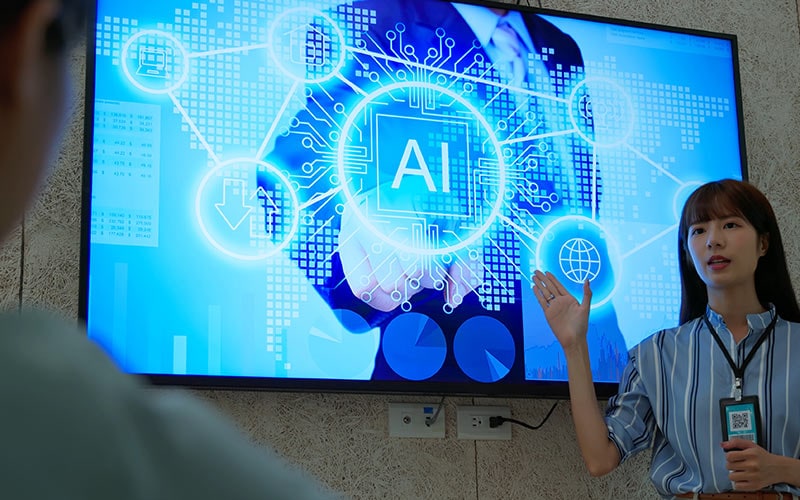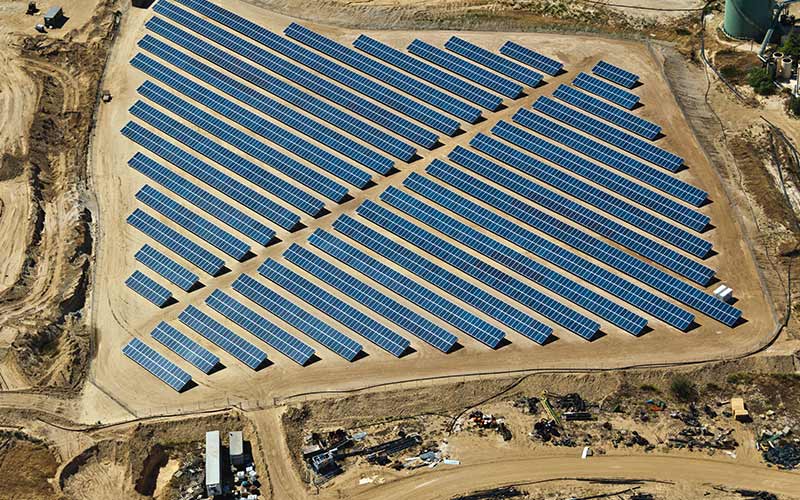Insights
- Changing mineral demand and events such as COVID-19 and the Suez Canal blockage have disrupted the mining sector’s supply chain.
- To overcome supply chain challenges, miners are increasingly turning to technologies such as digital twins, robotic process automation, intelligent storage and demand prediction, and quantum computing.
- However, mining needs changes across several fronts to successfully embrace digitization.
- It needs better data management practices, workforce reskilling/upskilling, and most importantly, inculcating a digital culture.
- The sector is at the cusp of a digital revolution, where technologies such as cloud, AI, ML, data, IoT, and computing power will converge to enhance business and environmental value.
The change in mineral demand dynamics is disrupting traditional mining supply chains. Demand is spiking for certain minerals, while remaining flat or low for others. Reasons vary, from sustainability requirements to increasing demand for newer products (such as electric vehicles). For instance, coal demand is expected to decline by 50% in the U.S. and by 60% in Europe between 2019 and 20301. Meanwhile, the need for minerals such as cobalt, lithium, and copper is gaining momentum, given their usage in sustainable manufacturing and energy generation/storage.
As demand and prices fluctuate, so will the production plan. In an ideal world, mining companies would like to adjust supply based on predicted demand as accurately as possible. This would entail optimizing the logistics involved in meeting the anticipated demand. However, traditional mining supply chains are not elastic enough to swiftly align supply pipelines with demand fluctuations.
The mining supply chain has always been complex and challenging to manage (Figure 1). With demand changes, complexities will further increase. Even though miners were aware of future supply chain requirements, pandemic-led disruptions pushed the supply chain to the forefront. The pandemic brought economic activities to a screeching halt, while miners and their customers faced delayed deliveries due to supply chain shocks. Studies estimated global supply chain disruptions across industries were up 67% in 2020 from the previous year.
Disruptions to supply chains due to the pandemic have forced companies to reconsider their supply chain strategies. The Suez Canal blockage in March 2021 hurt the global economy by approximately $9 billion per day,3 while the ongoing Russia-Ukraine conflict is causing price fluctuations for several commodities.4 These events are a stark reminder that mining companies need to prepare and plan for unprecedented threats and disruptions in the future.
Leading miners are turning to technologies to overcome supply chain challenges. Some are collaborating with tech companies to transform operations into connected ecosystems, whereas others are incubating and building digitally powered supply chains in-house. Collectively, these efforts are directed toward an operationally strong mining sector that can better predict and manage demand and disruptions.
Supply chain digitization is the solution
Even though supply chain digitization was always a strategic imperative for miners, the pandemic has put it at the top of CXOs priorities. Miners are increasingly leveraging digital technologies across operations (including the supply chain) for a variety of end objectives. They have helped them achieve higher efficiency, lower costs, and safer work environments. Leading miner BHP, is targeting to use predictive analytics to streamline operations, enabling better identification of asset conditions and efficiency. This helps it improve safety, production, and equipment availability, and lower operational costs.5 Similarly, Rio Tinto uses technologies to address productivity and sustainability issues. For enhanced supply chain traceability, the company has deployed blockchain solutions, allowing end-to-end digital transactions.6
The connected mining concept is successfully resolving many of the miners’ problems. It enables seamless mining operations across production, maintenance, procurement, logistics, and other allied functions. Miners are developing connected mines by using technologies including digital twins, smart inventory management systems, and robotic process automation (RPA). However, adopting these technologies requires substantial capital investment and careful tracking of returns on those investments at each step of the digital transformation journey.
Miners are increasingly adopting digital technologies to boost efficiency, bring down costs, and create safe work environment
Miners are deploying digital twin technology to augment their existing site maintenance capabilities. Digital twins are virtual models that accurately reflect the properties of physical objects. The technology uses augmented reality and virtual reality technologies for modeling, simulation, and cause-and-effect analysis to better predict and solve maintenance challenges. It helps miners visualize end-to-end supply chain and site operations. Miners use digital twins to enhance operational visibility and boost the real-time management of production, inventory, product pipeline, and deliveries. Here, autonomous systems are used for faster decision-making, and information technology–operational technology integration facilitates a better data flow from mines thanks to cloud-enabled systems providing global access to information across mine sites. For example, BHP uses digital twins to enhance the performance of its engineering and operations divisions.7 Rio Tinto uses them to combine data from processing plants with historical information to improve plant design and operations.8
To boost efficiency across the mining value chain, companies are investing in technology-driven intelligent storage and demand prediction systems. Intelligent storage is a smart inventory management solution that helps control costs using data analytics and predictive modeling. Using this system, miners are able to better predict and meet demand with minimal inventory costs. They are using artificial intelligence (AI)/machine learning (ML) and advanced data analytics-based technologies to manage their inventory and demand management, predict demand patterns, and optimize their inventory accordingly. Working along these lines, Glencore initiated a smart inventory management program, where it partnered with smart inventory solutions provider Xtivity. The solution uses AI/ML algorithms and predictive analytics to provide inventory recommendations to the company.9
Mining requires constant supplies of machinery, equipment, spare parts, and other items. With most mine sites being remote, time to procure is the key to efficient operations.10 Several leading miners have worked with Infosys to use RPA, which helps companies automate purchase requisition — creating purchase orders and reordering supplies — to boost their procurement function effectiveness. With RPA-enabled procurement, miners minimize downtime, boost order accuracy, and keep suppliers updated about upcoming requirements.
RPA is helping miners improve their procurement function to minimize downtime and improve order accuracy
To optimize its operations, a major mining company shifted its human-intensive procurement processes to Infosys’ Robotics Platform. The project automated the purchase request to purchase order process, including data validation and material master. Robotics helped the company set standards in procurement accuracy and efficiency, with the company reducing cycle time by about 50% and improving efficiency and accuracy by 36% and 100%, respectively.
Mining contributes between 4% and 7% of global greenhouse gas emissions, and a significant part of mining operations is logistics. As all major economies pursue aggressive climate-focused goals, mining must follow. To optimize shipping and logistics, a company needs to deal with several variables, so process and resource companies are partnering with tech and shipping companies to explore quantum computing solutions that can factor a higher number of variables and provide the most optimal routing solutions. However, the technology is still in its infancy and there is much to be explored.
The road to digitization is challenging but achievable
While digital technologies offer promising solutions to the mining sector’s supply chain problems, some fundamental issues need to be addressed. Mining has evolved from labor intensive to engineering heavy, and now it is on the path to becoming a tech-driven industry. However, there are significant challenges for miners on this digitization journey that involve big cultural shifts.
Mining companies’ operations have traditionally focused on extraction and engineering, while the workforce and organizational culture has always been geared toward an engineering-heavy system. Now, businesses will have to start putting digitization at the forefront of their business decisions, meaning decision-making will need to be driven by the question “How can digitization help improve operations, supply chain, productivity, etc.?”
Mining companies that are actively adopting digital technologies and automation are strategizing how these will change their way of working, how to create career paths for their existing and new workforces, and which new skills will be required to meet the demands of those career paths. While digitization will create new roles and opportunities, a few existing roles might become redundant or obsolete. This can be threatening to some people and exciting to others. Here, it becomes important for the workforce to understand that the benefits of digitization far outweigh the risks. To have a pro-digitization culture, leading miners such as Rio Tinto bring end users of technology such as mine operators into the automating conversation early. This helps the company understand the needs of end users and design solutions to facilitate the necessary changes.
To augment and bolster cultural changes, the mining workforce will require significant reskilling and upskilling. Miners can work on a threefold approach to achieve this. First, identify the required levels of tech knowledge based on job roles. Next, identify the mode of delivery through external partners (such as educational institutions) or internal facilitation. Last, choose function-specific champions who can help further push awareness of the need for digital knowledge among workforces.
Working along these lines, in 2020, Glencore launched the “Sustaining Digital Futures” initiative, which imparts foundation-to-intermediate-level digital skills to its workforce.11 Similarly, Rio Tinto is training its employees with specialized skills to operate and work at fully autonomous mine sites.12
Being an engineering-heavy industry, miners rarely cared for strong data management, storage, and security practices. However, with increasing digitization, robust data management practices will be important for long-term survival and success. This would entail data architectures to match varying frequencies, from the machine (real time) to enterprise resource planning (on demand) to limitless data volume management.
To make this a reality, miners will have to redefine data governance, quality, their catalogs, and master data for a digital mining ecosystem. Infosys has helped several mining companies strengthen their data management practices around climate change and sustainability. The solution includes creating a single-source data platform by aggregating operational and enterprise data. Powered by the cloud, this solution offers an emission-tracing dashboard, emission tax calculator, emission registers, and time series data.
The front-runners in the mining industry are already making strides toward connected operations, including the digital supply chain. This approach allows miners to meet their efficiency and profitability goals and to address the much-needed climate change requirements. Infosys’ “Practical Sustainability” book highlights the convergence of exponential technologies such as cloud, AI, ML, data management, the internet of things, and computing power. These technologies have the potential to add remarkable business and environmental value.13 The faster businesses do that, the sooner they will see the benefits.
References
- World Energy Outlook 2020, International Energy Agency, Oct. 2020.
- Mineral Resource Governance in the 21st Century, UNEP, 2020.
- Explained: How much did Suez Canal blockage cost world trade, Koustav Das, India Today, Mar 30, 2021.
- Russian-Ukrainian War Hits the Mining Sector, Paloma Duran, Mexico Business, Feb. 8, 2022.
- BHP Annual Report 2021 — The future is clear, BHP, 2021.
- Rio Tinto Annual Report 2021, Rio Tinto, 2021.
- BHP Minera Spence Digital Twin Case Study, Hexagon, Jun 11, 2018.
- What in the world do mining and rocket science have in common?, Rio Tinto, Jan. 6, 2020.
- The Path to a Fully Optimized Inventory, Xtivity.
- Climate risk and decarbonization: What every mining CEO needs to know, Lindsay Delevingne, Will Glazener, Liesbet Grégoir, Kimberly Henders, McKinsey, Jan. 28, 2020.
- Glencore Sustainability Report, Glencore, May 12, 2020.
- Preparing the workforce for an autonomous future, Michael Philipps, Australian Mining, Jan. 6, 2022.
- Practical Sustainability, Corey Glickman, Jeff Kavanaugh, Infosys Knowledge Institute, 2022.






